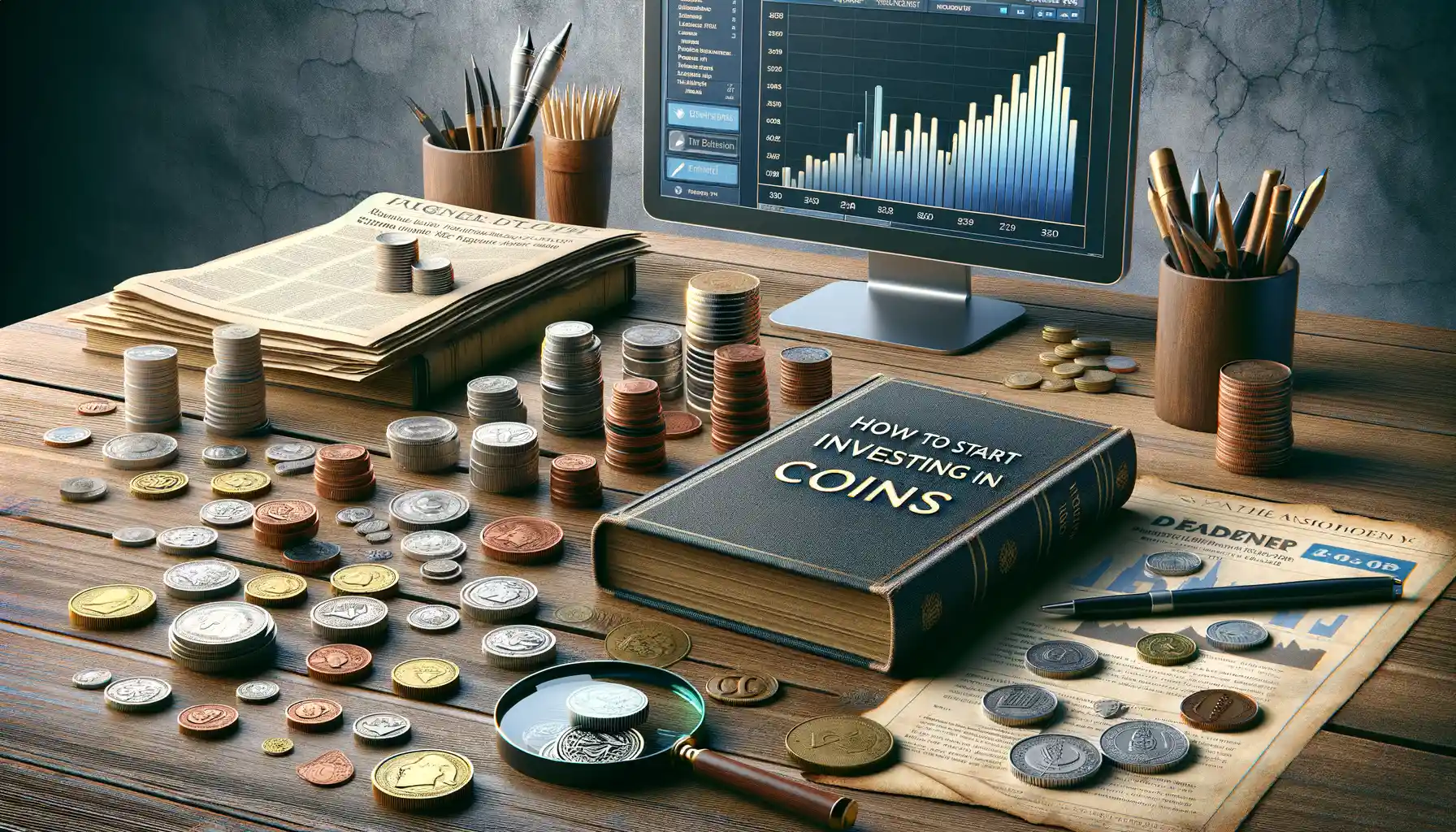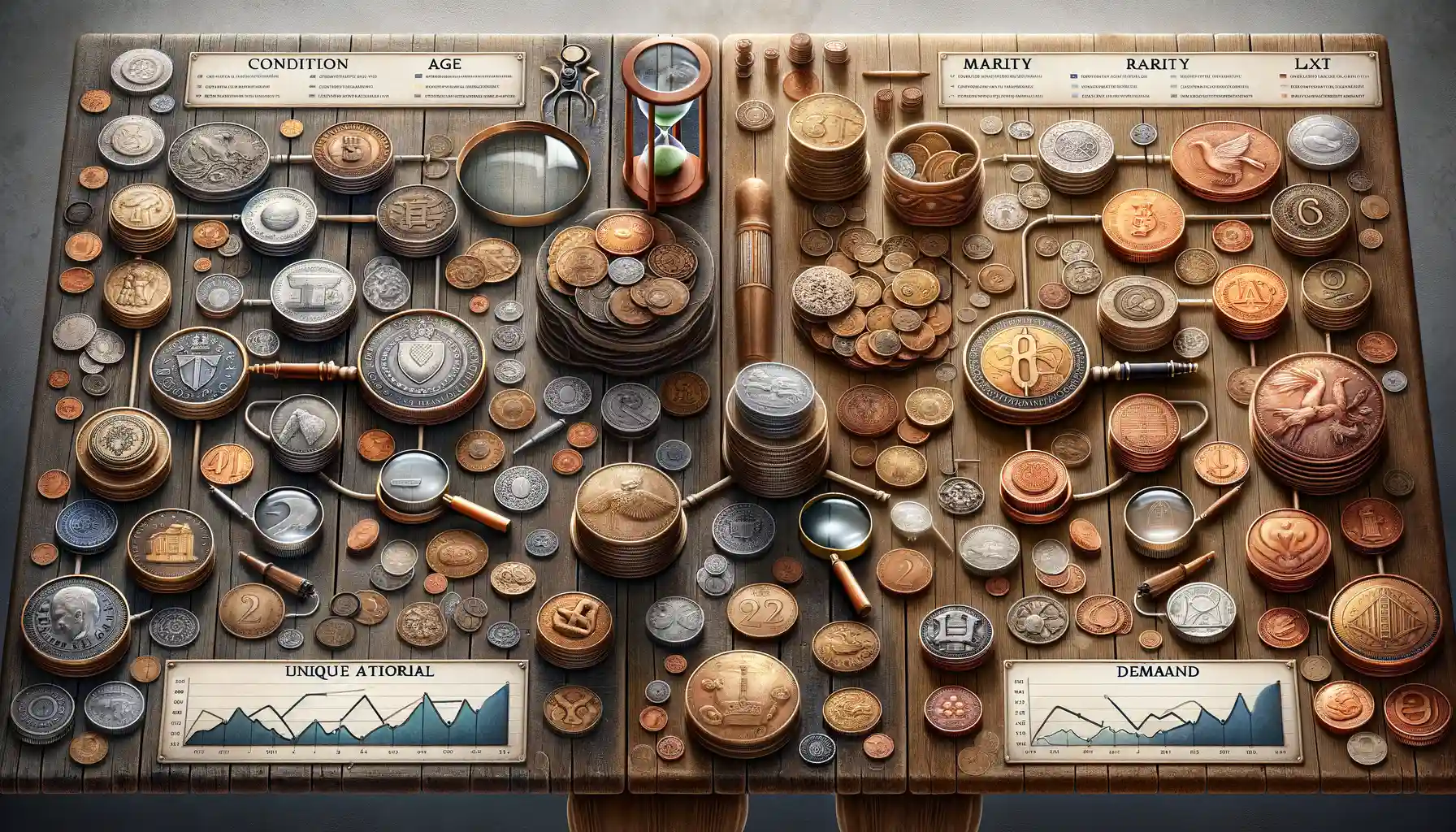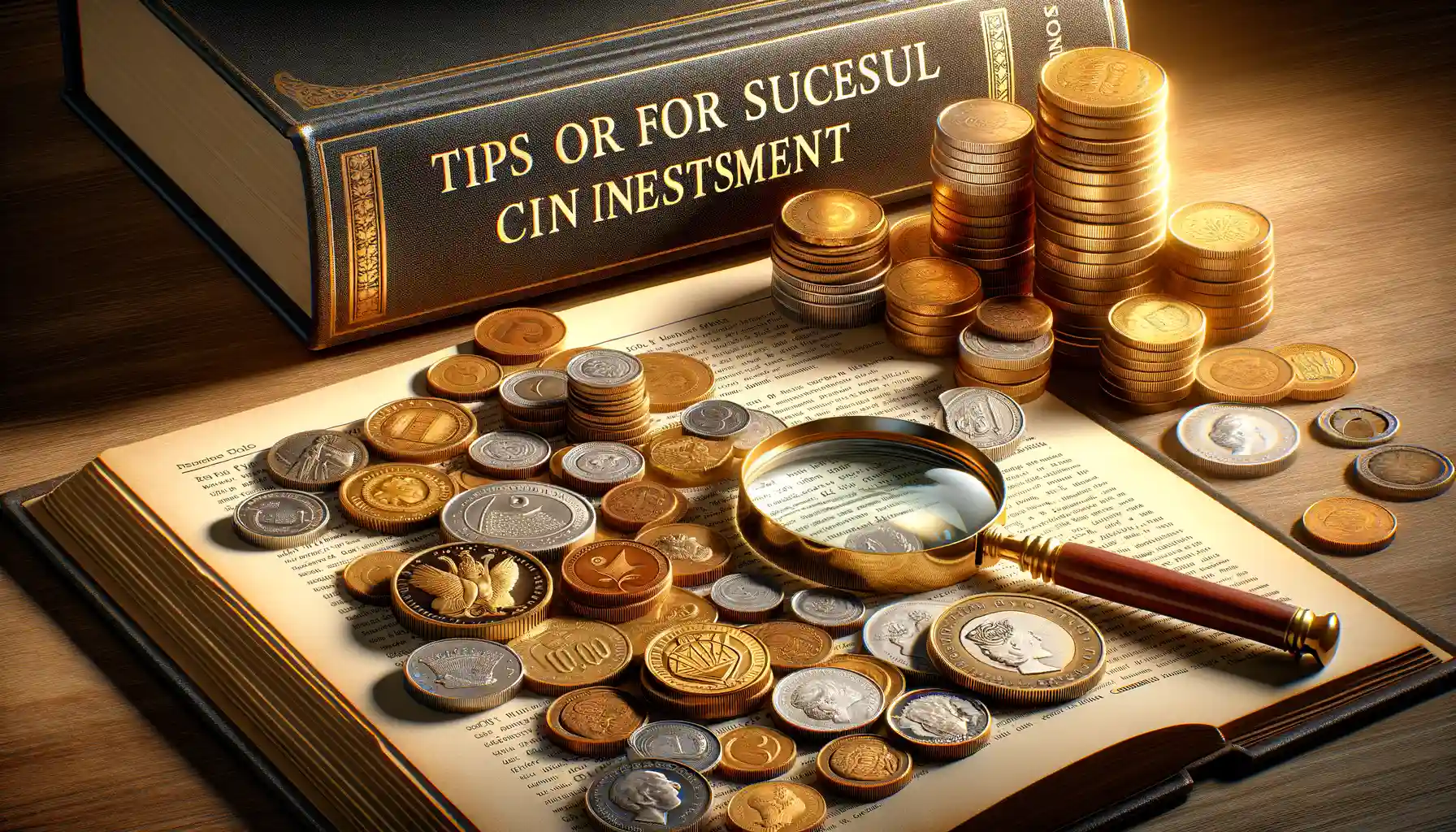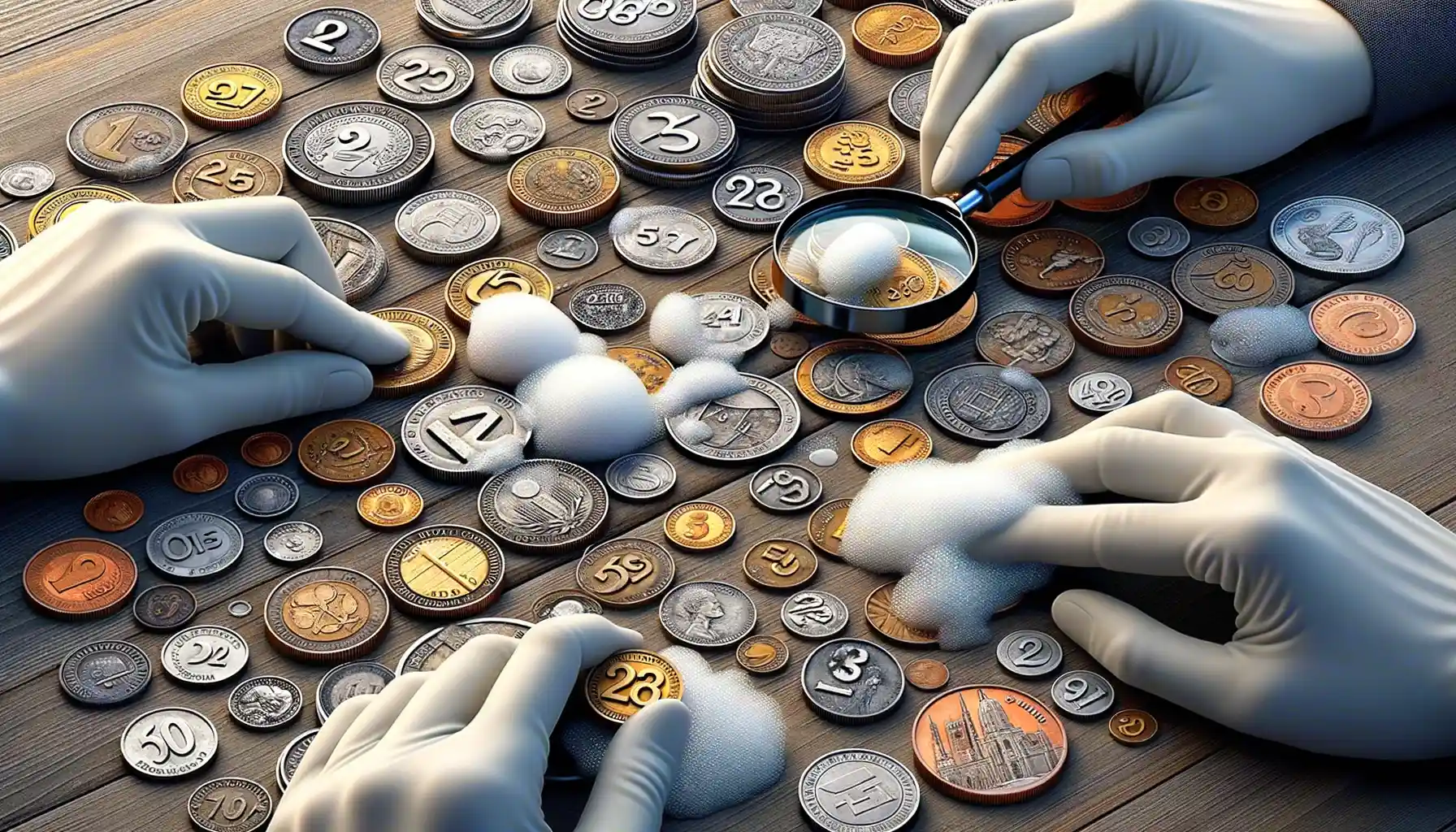Understanding the Value of Coin Collecting
Why Coin Collecting Is More Than Just a Hobby
Imagine holding a piece of history in your hand—something that has traveled through decades, even centuries. That’s the magic of coin collecting. It’s not just about economics; it’s about the stories these small discs of metal carry. Whether it’s a 1943 steel penny minted during wartime or an ancient Roman denarius, each coin whispers tales of its era.
Coin collecting also offers a unique intersection of art, history, and investment. Many coins feature jaw-dropping designs: intricate eagles, regal monarchs, and even mythological figures. But beyond their beauty, coins are tangible assets. Unlike stocks that can vanish into digital ether, a rare coin is something you can hold, admire—and, yes, flip for profit when the time is right.
- Historical significance: Coins reflect events like wars, political changes, and cultural milestones.
- Tangible value: Precious metals like gold and silver add an intrinsic worth to many coins.
- Scarcity: Limited mintage often equals greater demand over time.
For seasoned collectors, every find is a treasure hunt; for beginners, it’s a doorway into something bigger than themselves—a legacy they can pass down. Isn’t that worth digging into?
The Emotional Value of Coins
Coins don’t just sit in glass cases; they spark connections. Remember that coin your grandfather gifted you on your twelfth birthday? Or the shiny quarter you found on a family road trip that somehow felt lucky? Coins have a way of embedding themselves into our personal narratives.
And then there’s the thrill of discovery. Spotting a rare mint mark or uncovering an undervalued gem feels like unearthing buried treasure. It’s a tactile, emotional experience—not just another number on a spreadsheet. Every collector has *that* story of stumbling upon a coin that changed everything, a moment of pure excitement bottled into just a few grams of metal.
While the monetary growth potential is appealing, the heart of coin collecting lies in its ability to make you part of something timeless. In a world where so much is fleeting, coins offer solidity—a reminder that some things truly do stand the test of time.
How to Start Investing in Coins

Where Passion Meets Profit: Your First Steps
Jumping into coin investing might feel like stepping into a treasure hunt—and in some ways, it is! To begin, you don’t need to be a millionaire or have a vault of hidden knowledge. Start small, but think strategically. First, get familiar with the types of coins collectors covet: rare historical coins, beautifully designed commemoratives, and precious metal pieces. Each carries its own allure and potential for growth.
A good rule of thumb? Research before you reach into your wallet. Read books, join online forums, and even attend local coin shows—yes, they exist, and they’re packed with enthusiasts eager to share tips. Once you’re ready to buy, focus on quality over quantity. One pristine silver dollar can hold more value than a handful of tarnished pennies.
How to Find Coins That Shine in Value
When starting out, make sure every coin you acquire checks these boxes:
- Authenticity: Is it certified by a reputable grading service like NGC or PCGS?
- Condition: Look for coins with minimal wear—investors love near-flawless specimens.
- Demand: Are other collectors passionate about this coin? Hype often drives up future prices.
Remember, investing in coins isn’t just about spreadsheets and price charts; it’s about holding tangible history in your hands. That connection makes every shiny discovery feel like finding gold at the end of a rainbow.
Factors That Influence Coin Values

Historical Significance and Rarity
What really makes a coin gleam with value? Often, it’s the story it carries in its metallic heart. A coin minted during an era of dramatic historical change, like a Civil War-era penny or a Roman denarius, can ignite passions among collectors. The rarity of a coin also plays a starring role. Simply put, the fewer there are, the more coveted—and valuable—it becomes. Imagine holding one of the last surviving coins from a centuries-old mint shut down long ago. Instant magic!
Condition, Grade, and Eye Appeal
Let’s face it—looks matter. A coin’s grade, assessed by experts through meticulous scrutiny, can take its value to dazzling heights. Who wouldn’t gasp at the sight of a perfectly preserved silver dollar from the 1800s, its luster untouched by wear? Yet, beyond technical grades, there’s the intangible factor: eye appeal. That special catch-your-breath beauty.
Collectors also swoon over coins that tell their own visual stories: vibrant toning, sharp details, or even a fascinating minting error. Every smudge, scratch, or shimmer whispers something unique.
Tips for Successful Coin Investment

Unearth Gems by Researching
Investing in coins isn’t a spin of the roulette wheel—it’s about calculated moves. Before you dive in, get to know the history behind the coins that intrigue you. Is it a rare Roman denarius? Or perhaps a commemorative U.S. Liberty coin? Each piece tells a story, and understanding those stories can make all the difference.
A quick tip: if it’s too good to be true, it probably is. Scammers prey on beginners with flashy “deals” on fake rarities. Take time to vet sellers—seek out auction houses like Heritage Auctions or reputable dealers certified by organizations like PCGS or NGC.
Strategies to Keep Your Investments Shining
Profitable coin investment isn’t only about what you buy—it’s also about how you store and protect your treasures. Let me share some golden rules:
- Always handle coins by their edges. Fingerprints are not attractive on valuable coins!
- Invest in proper storage, like acid-free folders or airtight containers.
- Shield your coins from humidity and extreme temperatures. Think of them as delicate works of art—they thrive in stable environments.
And remember, patience is a virtue. The best investors play the long game, often holding onto their coins for decades until the value matures like a fine wine. Don’t rush. Coins, after all, carry the weight of centuries—you have time to savor the journey.
Common Mistakes to Avoid in Coin Collecting

Skipping Research: The Shortcut That Costs You
Imagine diving into the world of coin collecting without doing your homework—sounds fun, right? But it’s like buying a used car without ever popping the hood. One of the most damaging mistakes collectors make is failing to research coins before buying. Knowing the background of a coin, its minting year, rarity, and historical significance is critical. For instance, a 1909-S VDB Lincoln cent may look like an average penny to the untrained eye, but in reality, it could fetch thousands if authentic.
Collectors often throw caution to the wind, relying on gut instinct or vendor persuasion. Don’t fall for flashy sales pitches or shiny surfaces. Instead:
- Verify the coin’s authenticity with trusted numismatic experts.
- Brush up on grading scales – a small grade difference can mean hundreds of dollars!
- Always check market trends to avoid overpaying.
The Pitfall of Neglecting Proper Storage
Here’s another heartbreaking mistake: improper coin storage. Coins aren’t just possessions; they’re pieces of history. Yet, some collectors shove them into drawers or plastic bins, unknowingly exposing them to scratches, moisture, or tarnish. Would you store a priceless painting in a damp basement? Of course not!
Use materials like acid-free holders, air-tight capsules, or albums specifically designed for coins. Keep them away from humid environments or fluctuating temperatures. A well-maintained collection not only preserves the coin’s beauty but also its value. Remember: careless storage could turn a rare gem into a ruined relic.